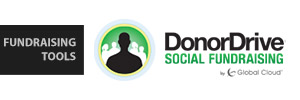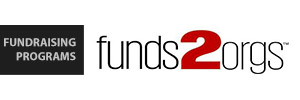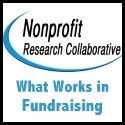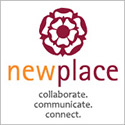While much of the New York City area was sleeping in on Monday, Columbus Day, I joined several hundred other media publishers, marketers, software developers and entrepreneurs for the Realtime Marketing Lab. This day-long event, hosted by Tonia Ries, (my friend , and) Founder of The Realtime Report, featured addresses from luminaries including thought leader and author, Ted Rubin, Frank Eliason (Director of Global Social Media, Citibank), Renee E. Ducre (Global Director of Marketing, IBM Social Business), Adam Kmiec (Director, Global Digital Marketing and Social Media, The Campbell Soup Company), Chris Lindland (CEO, Betabrand), Ken Ericson, (Director of Content Marketing, Xerox) and more!
In addition to the super lineup, there were several vendors who did their best Shark Tank pitch in front of the audience and the celebrity judges, as well as a help desk where attendees were welcomed to collaborate with other leaders. I got to spend some one on one time with Maddie Grant, Digital Strategist at ICF International and Author/Editor for SocialFish ( a social media blog for associations) to talk nonprofit sector social media. I also thoroughly enjoyed the fabulous brownie that was included in the lunch. But, I digress.
Here are the biggest take-aways:
What we are all getting wrong about social media
- We are only measuring ROI. Ted Rubin explains that it’s the ROR- Return on Relationship that’s the important thing. Influence isn’t an easy thing to be measured. To put this in nonprofit context: the annual gala that costs $3.00 for every $1.00 raised? It is acceptable for a number of reasons: the donors look forward to it, it’s a great way to honor them—yes, to further your relationship with them and, hopefully, those donors will advocate to their sphere of influence. Relationships take time and, ultimately, the relationship is what will increase the ROI in the long run.
- We’re not listening. All those tools you have for analyzing and tracking? Comments and suggestions from outside and inside? Take them, listen to the problems. Use social as a way to adapt to your clients/donors needs. Don’t just delete negative comments, turn “frowns” into “happy faces”. (Best advice for dealing with negative comments: Kill ‘em with kindness)
- We are not remarkable. It’s not about you. It’s your customer/beneficiary’s story that makes your company/nonprofit remarkable. Recently, I spoke with Matt Shaffer, Division Marketing Director at The Trust for Public Land, who shared this video- a great example of featuring information about the organization from the perspective of a beneficiary. Check out the video. Matt told me that they would notice a drop off in viewing part way through the video, in some previous videos where the storytelling was done from the group’s perspective-but this video was completely different and they recognized that they really did something right by looking at it from the outside- in.
- Don’t leave it hanging. A good social media strategy needs to be created, the social media effort needs to coincide with all other marketing efforts. It’s a cog in the machine of marketing-and all cogs need to work together. It doesn’t exist as a single tweet or post or contest. Instead, have a plan and look at an event to tie it to. We were lucky enough to hear from the R/GA, the interactive agency that produced the social media campaign for Breaking Bad, which was hugely successful. It was one of the most buzzed about seasons of shows of all time-it was planned out well in advance to get viewers involved and invested as experts and each of them tapping into their social networks. In the context of nonprofits, it’s a lot like your Peer to Peer fundraising model, which has been shown to produce so much more return than a direct ask from your group.
- It’s not the same world as it was 30 years ago. Ok, that seems obvious, when I put it that way, right? But as Eliason so eloquently put it: “It’s a new world. Today, companies need customers to market their brand” Insert nonprofit applicable.
Do you have any input to share with us about your group’s social media endeavors? What’s your biggest challenge? Biggest success?
We’d love to hear from you!











